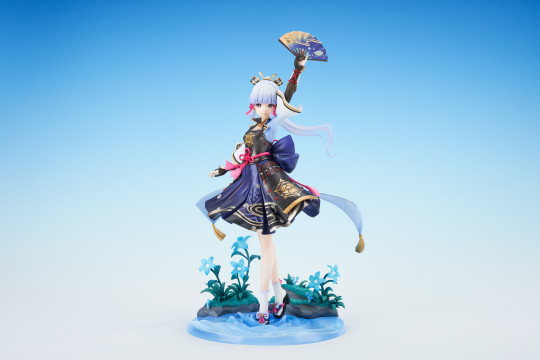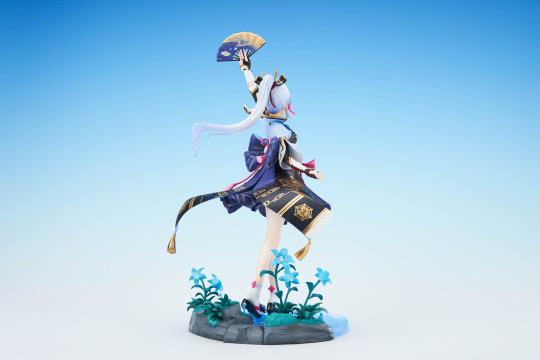#shenli linghua
Text


Kamisato Ayaka ; Genshin Impact ☆ Apex Innovation
#kamisato ayaka#ayaka kamisato#genshin impact ayaka#gi ayaka#ayaka#ayaka figure#genshin impact#genshin impact figure#genshin#genshin ayaka#genshin figure#gi#gi figure#shenli linghua#apex innovation#anime#anime figure#anime figurine#figure#figure collecting#figurine#scale figure#anime collecting#myfigurecollection#manga
193 notes
·
View notes
Text



Ayaka Kamisato : Frostflake Heron [Genshin Impact] 1/7 scale from APEX coming September 2024.
#Ayaka Kamisato#Frostflake Heron#Genshin Impact#1/7 scale#APEX#Kamisato Ayaka#Ayaya#Genshin#GI#Shenli Linghua#Ayaka Genshin Impact#Genshin Ayaka#Apex Innovation#Video Game Characters#Anime Figures
33 notes
·
View notes
Text
Who the hell is Xiaogong: “Waifu Languages” for the Westerners in the back
Now that Yomiya/Xiaogong has been officially announced, I can talk about her name on a blog that has my UID all over it without getting banned, woohoo! Source: I am a fluent Chinese speaker, semi-fluent in Japanese, and have studied some limited Korean. English is not my first language, please be kind about errors.
You may know the upcoming pyro archer character as Yomiya, or maybe you’ve seen it written as Yoimiya instead. You may (but probably did not) also see her name written as Xiaogong. In both Japanese and Chinese, her name is written 宵宮. Why, then, does it have such very different English transliterations?
Well, speedrunning thousands of years of history, Japanese was a spoken language long before it was ever written. Around the 5th century CE, Chinese had a fairly straightforward (this is a joke for the people who learned Chinese as a second language in the audience) written language that matched its spoken language. This is the century when Japanese began to be written down using Chinese characters, a form of proto-kanji. By the 8th or 9th century CE, Japanese was being written down much more frequently, and it began to take on a life of its own, evolving into its own written language.
Here’s where I have to also speedrun the entire Japanese language. Japanese is divided into three “systems”: hiragana, the very simple and cute curved characters that only appear in Japanese; katakana, simplified versions of Chinese characters that only appear in Japanese; and kanji, unmodified Chinese characters that appear in both languages. Chinese expresses tone by having four distinct tones. Each character is pronounced one way and one way only, and the same word in each tone may have a different meaning. Japanese expresses tone by intonation, like how you can tell in English by listening to intonation if something is a statement or a question. That’s why Japanese has extra characters: Chinese doesn’t have conjugation or declension.
It’s easy to tell Japanese and Chinese apart if you can or cannot find hiragana and katakana, which are unique to Japanese, or if you’re listening to either language being spoken. They sound very different spoken aloud, because borrowing someone’s written characters might mean the same thing, but it doesn’t sound the same way, because you already have a spoken language, you just needed a written one. For example, pyro archer’s name: 宵宮. No matter how you read it, 宵 means “early night hours” or “evening” and 宮 means “palace”. Those characters are kanji in Japanese, and you would read them aloud “yoi” and “miya”, or together, “Yomiya”. In Chinese, they’re just characters, and they read “xiao” and “gōng”, or “Xiaogong”.
Now, I can hear in the distance someone saying, “But 坟墓 (literally “grave grave”, or Graves, me), if 宵宮 is from Inazuma, which is based on Japan, making her Japanese, isn’t the Japanese pronunciation the correct one?”
Well, yes. If you don’t speak Chinese. Possibly also if you do speak Chinese. Most likely if you’re voicing a character in the Chinese dub of Genshin Impact. But it’s less a matter of one way being correct and the other being incorrect, and more a matter of one way being the way most people say it. If a French girl introduced herself as Capucine, you’d call her Capucine, not “hooded monk”, even though that’s what that name means. But if you’re reading a letter from your French friend Capucine and she tells you about her home’s remodeled foyer, she’s calling it a “foy-ay” and you’re calling it a “foy-er”. It means the same thing, but you’re going to read it in your first language with that word, and she’s going to read it in her first language with that word.
It’s the same with characters from Inazuma. I learned Chinese first, then learned some Japanese much later, so when I see Chinese characters, I assume I’m reading Chinese. Someone who’s more familiar with Japanese would probably do the reverse. I read 宵宮, 枫原万叶, 神里绫华, and 早柚, which are Yomiya, Kaedehara Kazuha, Kamisato Ayaka, and Sayu respectively, and hear Xiaogong, Fengyuan Wanye, Shenli Linghua, and Zaoyou.
I’ve neglected to mention Korean, third of the waifu languages trinity, so coined by anime simps. Korean script looks kind of similar to Chinese or Kanji. Take Kazuha’s name, since it’s longer, and longer text samples are better for patterns. In Japanese, it’s 楓原万葉, and in Korean, it’s 카에데하라 카즈하. Korean script uses more simple characters to write out one complex character. Do you see how all those Korean characters look like individual pieces of the four Japanese characters? In Korean, you’d read those four names like you would in Japanese, if you had a moderate Korean accent. Some sounds are different -- Kaedehara Kazuha becomes Kaedehara Kajeuha, but the characters read the same aloud as the Japanese versions.
This is all to say: I hope you enjoyed an unprompted linguistics lecture, and if you see me calling someone from Inazuma by their Chinese name, I’m right, and you ain’t see nothing.
[English vocab:
“transliteration” = an original writing in one script that has been written phonetically (as it is pronounced) in a different script
“intonation” = the way a word or sentence is emphasized audially to communicate different tones and moods
“conjugation” = verbs being changed from the same infinitive to express different tenses and subjects who are doing the verb
“declension” = nouns being changed from the same simple form to express different numbers, genders, etc.
“Capucine” = a French girls’ name gaining some recent popularity, likely because of the popular French model and actress Capucine active between 1948 and 1990, known for her roles in Pink Panther and What’s New Pussycat?]
#genshin impact#genshin#yomiya#yoimiya#genshin yoimiya#genshin impact yoimiya#kazuha#kaedehara kazuha#genshin kazuha#genshin impact kazuha#kamisato ayaka#ayaka#genshin ayaka#genshin impact ayaka#sayu#genshin sayu#genshin impact sayu#inazuma#genshin inazuma#genshin impact inazuma#genshin 1.7#genshin impact 1.7#long post#graves rambles about nerd shit#@ westerners I'm not making fun of u this time it's ok#please enjoy a complimentary insult-free lesson#but if you're worried I'm being held hostage to be nice to you#you're pronouncing the names wrong in every language lmao
75 notes
·
View notes